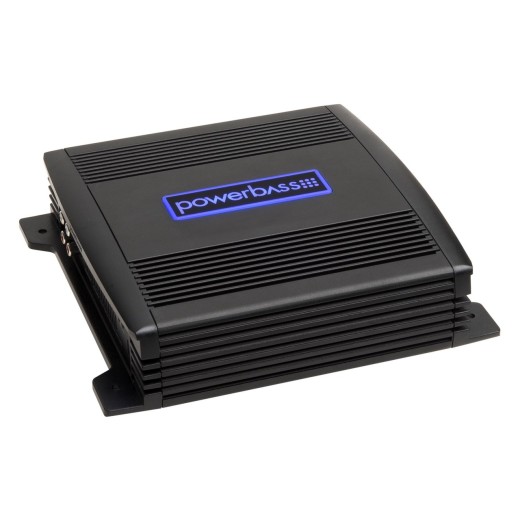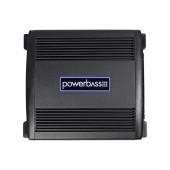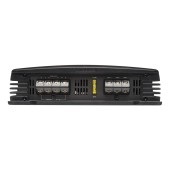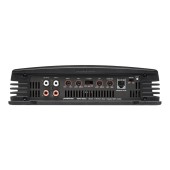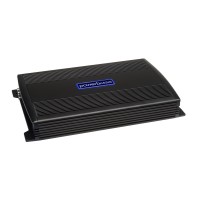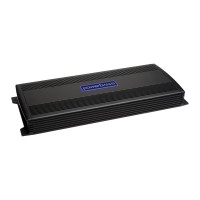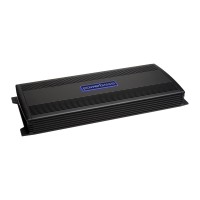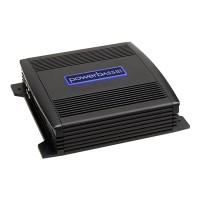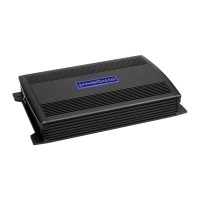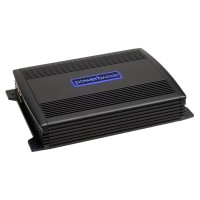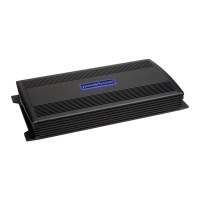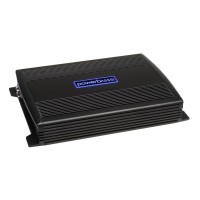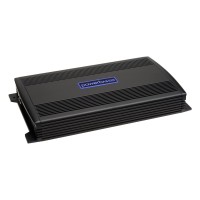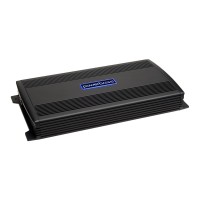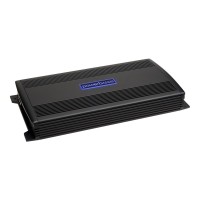Amplifier Powerbass ASA3 300.2
2-channel amplifier, 2 x 75 / 1 x 300 W RMS (4 Ω), 2 x 150 W RMS (2 Ω)
More about the product
More about the product
We will help you with your purchase
- Use our consulting room
- You can return the goods to us within 14 days
- Try the product at our store
Amplifier Powerbass ASA3 300.2
At Powerbass, they were faced with a difficult task - to improve the now legendary amplifiers of the ASA series. Welcome to ASA3! The third generation of ASA series amplifiers has a narrower footprint for installation versatility, increased surge protection, wider input sensitivity, a new extruded package designed for better heat dissipation. It has managed to retain all the popular features that are usually found only in the high-end ranges of other brands. ASA3 amplifiers meet the needs of every true audiophile. The new improved extruded heatsink uses more fins while maintaining the clean lines that make the ASA a classic. These amps deliver pure performance with the soul of rock and roll or whatever your musical tastes are. Variable 12dB, high/low pass, electronic crossover for endless system applications. A PWM MOSFET power supply for effective, distortion-free sound reproduction that offers 2 ohm stereo or 4 ohm mono stable capabilities. User-friendly features such as variable bass gain control with 18dB gain at 45Hz give you more performance from your subwoofers. If you really want serious output control of your subwoofer, there is an optional remote control available for all 2, 4 and 5 channel models.The main features of the Powerbass ASA3 300.2 amplifier
- 2-channel class A/B amplifier.
- Power 2 x 75 / 1 x 300 W RMS (4 Ω), 2 x 150 W RMS (2 Ω).
- PWM MOSFET power supply.
- RCA low-level input/RCA low-level pass-through output.
- Remote soft on/off delay.
- Variable high/low pass electronic crossover.
- Variable 18dB Bass Boost EQ at 45Hz.
- Variable gain control.
- Protection circuit: impedance overload, speaker short circuit, thermal overheating and DC output.
- Wired secondary gain remote control (optional PB-GAIN1) - not included.
- Switchable logo backlight.
About the Powerbass brand
Powerbass was founded in 2001 with one goal in mind: to bring to the market great audio products offering perfect sound and high reliability at an affordable price. Powerbass is headquartered in Ontario, California, where it also owns manufacturing facilities with a top engineering team and development management. Originally, Powerbass focused on the production of high-quality OEM speakers, which at the time represented inimitable quality in the given price category. Over the years, they have expanded the offer with many products such as subwoofers or amplifiers and of course several model series of speakers, of which the basic "S" series in particular has become almost legendary. And always with the same goal as in the beginning - to offer affordable products that surpass the competition. Two decades later, Powerbass honors the same values and offers its customers a comprehensive portfolio of high-quality products to maximize the music listening experience.| Catalog number | ASA3 300.2 |
| Brand | Power bass |
| Links | Official web presentation (English) |
| Number of amplifier channelsAmplifiers are divided into: - Monoblocks - 2-channel - 3-channel - 4-channel - 5-channel - 6-channel - multi-channel Each channel is used to power one speaker for the coaxial type, or one side if they are component speakers. Monoblock type amplifiers are mainly used for subwoofers. 2-channel are suitable for both subwoofers and, for example, the front pair of speakers in a car. 3-channel is used for front or rear speakers + subwoofer. 4-channel are used for front + rear speakers or 1 pair of speakers + subwoofer. 6 or 5-channel are used for 2 pairs of speakers + subwoofer, most often. Bridging means connecting the amplifier to a bridge, using the + pole from one channel and the - pole from the other channel. In most cases this is shown as "BRIDGED" on the amplifier. | 2 |
| Energy class of the amplifierAmplifiers are divided into two basic classes: analog and digital . Analog amplifiers (A/B) have higher consumption requirements, but usually have a more natural sound. Digital amplifiers (D) have significantly lower consumption and higher efficiency, but the sound may not be as faithful as with classic analog amplifiers. | A/B |
| RMS power into 4 ΩRMS power when loading speakers or subwoofer at 4 Ω. RMS power is the constant power of the amplifier and is one of the most important parameters when choosing an amplifier. | 2 x 75 / 1 x 300 W |
| RMS power into 2 ΩRMS power when loading speakers or subwoofer at 2 Ω. RMS power is the constant power of the amplifier and is one of the most important parameters when choosing an amplifier. | 2 x 150 W |
| Low-pass filter (LPF)LPF / LP or "low pass filter" offers the possibility to adjust the amplifier using a potentiometer so that the lower band plays only the frequencies in a certain band that you need. This filter is used to adjust the frequency range for the subwoofer, so that it does not overload or distort the sound. Example: Amplifiers most often have an LPF from 20 to 300 Hz. We recommend setting this potentiometer in the range of 45-80 Hz. | 40 - 250 Hz |
| High pass filter (HPF)HPF / HP or The "hi pass filter" offers the option of setting the amplifier using a potentiometer so that medium, possibly mid-bass and treble frequencies play upwards from a certain frequency. Example: Amplifiers most often have an HPF from 40 to 300 Hz. If we set the potentiometer to a value of approx. 150 Hz, the sound will be clipped so that it plays frequencies from 150 Hz up to the maximum upper limit of the entire frequency range of the amplifier, perhaps up to 20,000 Hz. We recommend setting this potentiometer in the range of 80-160 Hz. Thanks to this setting option, the speakers can handle a higher performance, as you will not overload them with bass in the lower frequency range. | 40 - 250 Hz |
| Frequency rangeThe ability of the amplifier to reproduce the signal from the lowest frequency to the highest = faithfully reproduce the sound in a specific frequency band. Professionally: In the frequency range from 40 to 16,000 Hz, the vast majority of fundamental and overtones (harmonics) of all musical instruments are found. We are interested in the course of the radiated sound pressure in this range of frequencies when the loudspeaker system is supplied with constant power. We call this course the frequency characteristic, which tells us the level of radiated sound pressure in decibels (dB) depending on the frequency. The frequency characteristic of a speaker or speaker system can be expressed most succinctly with a graph. Mostly, however, the frequency characteristic is indicated by indicating the maximum tolerance of the sound pressure in the given frequency range, e.g. 50 to 15,000 Hz -+ 6 dB. Since the frequency characteristics of loudspeakers and systems in general are quite uneven, some manufacturers do not even specify this maximum tolerance of sound pressure in decibels in their catalogs for reasons of prestige. Data impoverished in this way is unfortunately worthless. What is valid is that the manufacturer offers a speaker system with a frequency range of 30 to 20,000 Hz, if he is worried about stating the maximum unevenness of the sound pressure in this range, because he can have a tolerance of, for example, +- 20 dB. The unevenness or undulation of the frequency curve in good speaker systems for high-quality music performance should not exceed +-3 dB in the 80 to 12,000 Hz band and +-6 dB in the 40 to 16,000 Hz band. Greater unevenness already depletes or emphasizes certain tonal areas, which can cause audible or even disturbing distortion. The proportion between fundamental tones and higher harmonics also changes, thereby changing the color of the sound, and individual musical instruments as well as the entire musical image sound unnatural. | 20 - 22 000 Hz |
| Harmonic Distortion (THD)Total harmonic distortion indicates how much the input signal is distorted in the amplifier. Distortions appear as overtones contained in the output signal. The proportion of originally absent parts of the signal is given as a percentage, typical values are between 0.001% and 0.5%. Distortion is measured in their power band. If it exceeds the limit of 0.7% from a certain power, it is the value of the output power of the given amplifier, from which it no longer plays without distortion and from which the distortion usually increases steeply, so that no further increase in power can be counted on. The lower the value, the better. | 0,05 % |
| Signal-to-noise ratioThe signal-to-noise ratio means that the output signal always contains noise. The signal-to-noise ratio expresses how much of this noise is compared to the useful signal. The so-called A value is given, which does not take deep and very high frequencies into account. This corresponds to the characteristic of human hearing, which is not so sensitive to deep frequencies, especially below 1 kHz. The higher the value, the better the amplifier is. | 94 dB |
| Input sensitivityIn order for the amplifier to perform its function correctly, it requires an input signal of a certain level, which is different for car radios. It is measured in "Volts" (e.g. 2 V, 4 V, etc.) The higher the value at the output of the pre-amplifier, or car radio, the less demands are placed on the power of the amplifier. However, the amplifier must allow this input sensitivity, and for that reason this value is also given for the amplifier. | 0,5 - 4 V |
| Remote control included in the packageSome models of amplifiers also come with wired remote controls in the package, which on one side plug into the amplifier and on the other side you have a potentiometer that you can place anywhere in the cabin. A common place to place the remote control is under the steering wheel. The advantage is the regulation of power, and therefore volume, depending on driving conditions and the mood of the crew in the car. | Ne |
| The value of the fuses on the amplifierFrom the value of the fuses on the amplifier, you can get a true picture of the real performance of the amplifier. | 1 x 20 A |
| Dimensions of the amplifier | 245 x 208 x 58 mm |
Product comments
Evaluation
ask us

